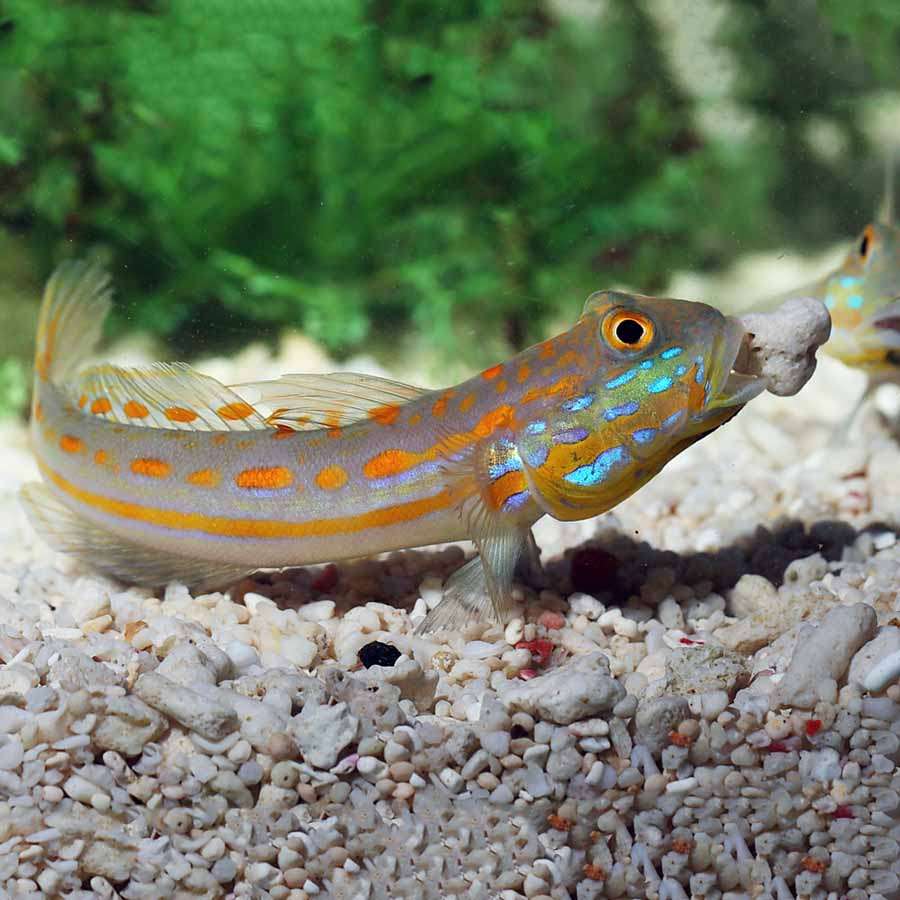
Size
This species’ length has been determined to be 11 cm (4.3 in)
Physical characteristics and behavior
In 1938, scientists found the Orange Spotted Goby in the Western Pacific. orange dots with a brown outline on white. With alpheid shrimp, it develops symbiotic partnerships. It continues to watch while the shrimp build a joint burrow. It works well in aquariums 10 gallons or bigger with swimming and hiding spaces. To stop escapes, the aquarium’s lid should fit snugly. To reef aquariums, the Orange Spotted Goby adapts well. But it might hurt tiny shrimp. It enjoys digging through coral rubble and fine sand.
Keeping as Pet

- Tank Size
If you intend to keep an Orange Spotted Goby, your aquarium must be at least 10 gallons in size.
However, a lot of aquarists enjoy adding more tank mates. Other peaceful species, such as a snowflake clownfish, can be introduced, but you’ll need a much larger aquarium because the orange spotted goby can be a little on the shy side. You’ll have more possibilities for adding more tank mates the bigger the aquarium is.
- Tank Mates
You’ll be happy to know that the Orange Spotted Goby’s calm disposition makes for a lot of intriguing tank mate additions if you have a big enough aquarium.
Pink Streaked Wrasse, Snowflake Clownfish, Blue Chromis, Spotted Cleaner Shrimp, and Pink Skunk Clownfish are a few possible tank mates.
Just stay away from aggressive species like Tessalata Eels and Maroon Clownfish. The last thing you want to do is add to the already shy nature of orange-spotted gobies by introducing more aggressive species.
- Diet
Orange Spotted Gobies need to eat live blackworms, copepods, and thawed brine and Mysis shrimp 2-3 times per day. Using a feeding tube will simplify feedings for these carnivorous fish because they frequently hang out close to the substrate.
These fish will continuously comb the sand to look for fresh prey. If your aquarium isn’t at least two years old, you might want to introduce more copepods once a week to make up for the absence of microfauna. Your Orange Spot Goby will receive the nutrition they require thanks to the extra copepods.
- Water Conditions
The Orange Spotted Shrimp Goby does best in water that is between 72 and 78 degrees Fahrenheit, with a pH of 8.1 and 2.4 and a salinity of 1.020 and 1.025. (22-26 oC).
Table





